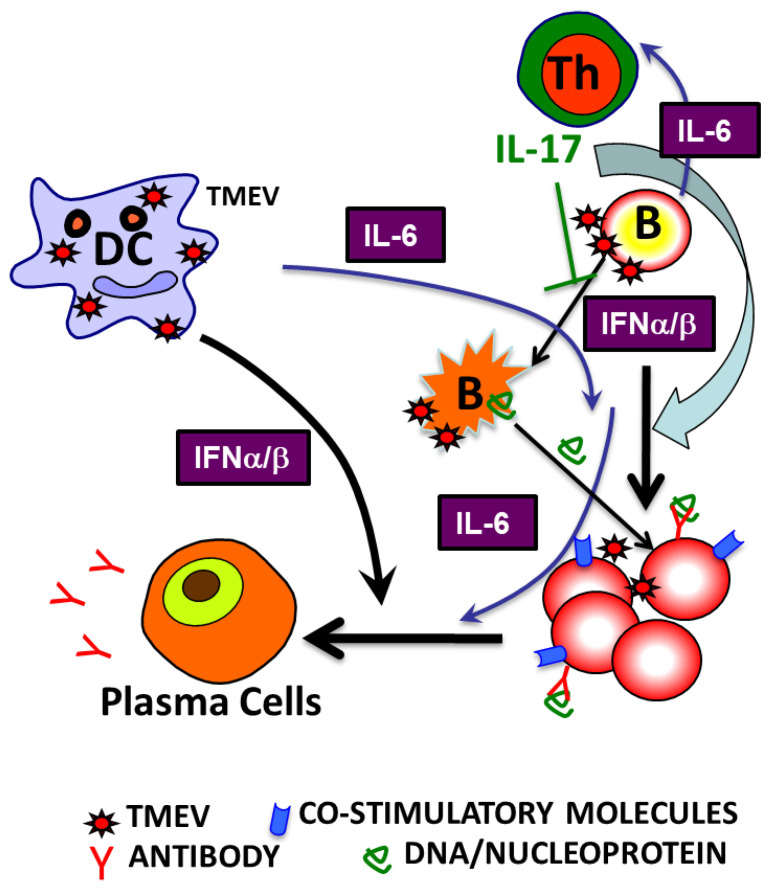Figure 7.
Potential mechanisms underlying polyclonal B cell activation following viral infection. Infection of susceptible mice with neurotropic TMEV induces excessive levels of innate immune cytokines, including type I IFNs, IL-6, and IL-1, which promote inflammatory Th17 responses over protective Th1 responses, leading to high viral loads in the CNS. Various glias and antigen-presenting cells (APCs), including B cells, are permissive to the viral infection and participate in the innate immune responses and viral persistence. Interestingly, B cells are activated and stimulated to produce elevated levels of antibodies. Such high viral loads and innate cytokines as well as adaptive immune responses in the CNS led to CNS tissue damage releasing sequestered autoantigens. Although the role of autoimmune components in the pathogenesis of virus-induced demyelinating disease is unclear, many considerable circumstantial evidences suggest a potentially important role of microbial infection in the induction and/or progression of various autoimmune diseases.

